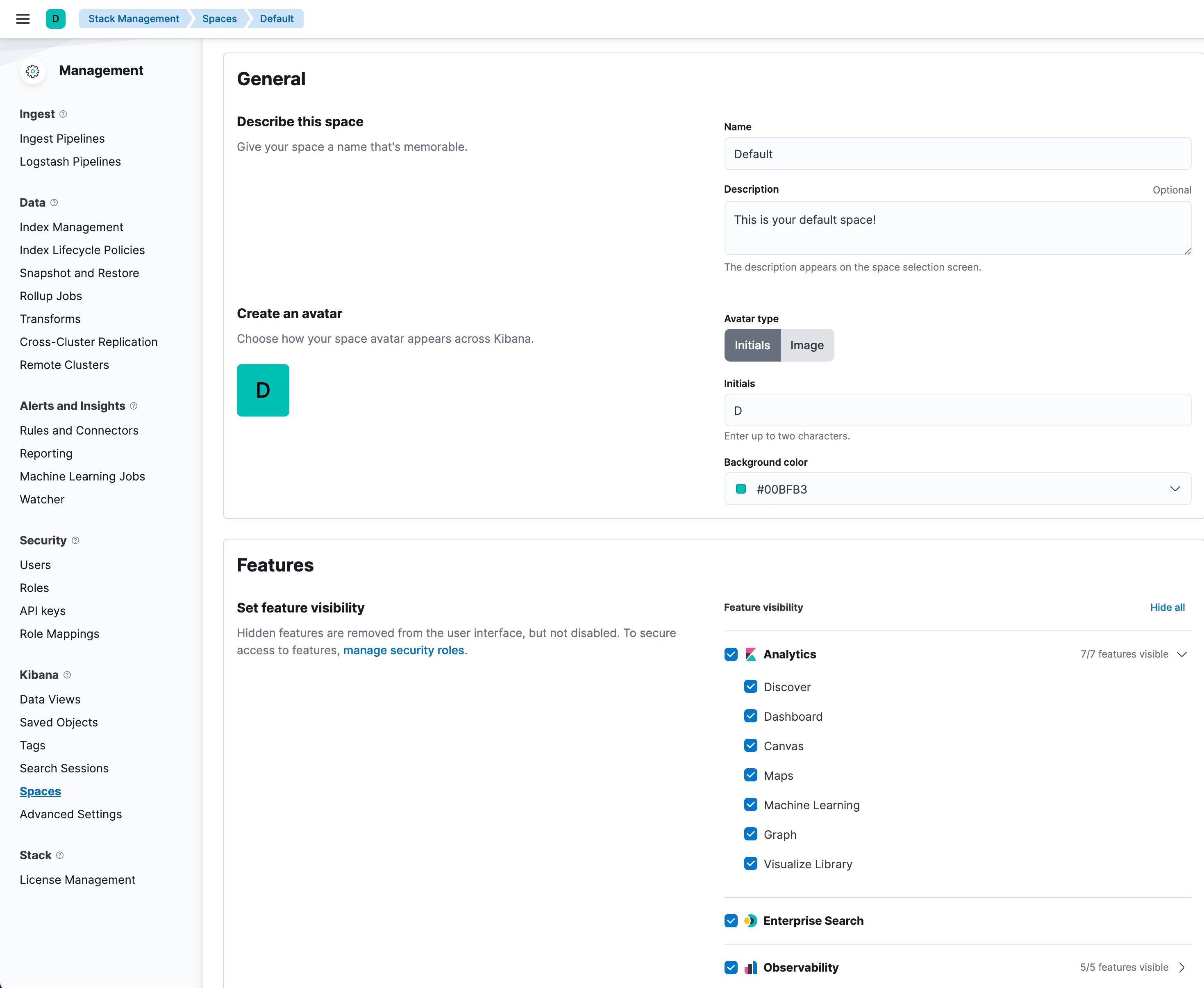Set up machine learning features
editSet up machine learning features
editRequirements overview
editTo use the Elastic Stack machine learning features, you must have:
- the appropriate subscription level or the free trial period activated
-
xpack.ml.enabledset to its default value oftrueon every node in the cluster (refer to Machine learning settings in Elasticsearch) -
mlvalue defined in the list ofnode.roleson the machine learning nodes - machine learning features visible in the Kibana space
-
security privileges assigned to the user that:
- grant use of machine learning features, and
- grant access to source and destination indices.
The fastest way to get started with machine learning features is to start a free 14-day trial of Elasticsearch Service in the cloud.
Security privileges
editAssigning security privileges affects how users access machine learning features. Consider the two main categories:
- Elasticsearch API user: uses an Elasticsearch client, cURL, or Kibana Dev Tools to access machine learning features via Elasticsearch APIs. It requires Elasticsearch security privileges.
- Kibana user: uses the machine learning features in Kibana and does not use Dev Tools. It requires either Kibana feature privileges or Elasticsearch security privileges and is granted the most permissive combination of both. Kibana feature privileges are recommended if you control job level visibility via Spaces. Machine learning features must be visible in the relevant space. Refer to Feature visibility in Spaces for configuration information.
You can configure these privileges under Stack Management > Security in Kibana or via the respective Elasticsearch security APIs.
Elasticsearch API user
editIf you use machine learning APIs, you must have the following cluster and index privileges:
For full access:
-
machine_learning_adminbuilt-in role or the equivalent cluster privileges -
readandview_index_metadataon source indices -
read,manage, andindexon destination indices (for data frame analytics jobs only)
For read-only access:
-
machine_learning_userbuilt-in role or the equivalent cluster privileges -
readindex privileges on source indices -
readindex privileges on destination indices (for data frame analytics jobs only)
The machine_learning_admin and machine_learning_user built-in
roles give access to the results of all anomaly detection jobs, irrespective of
whether the user has access to the source indices. You must carefully consider
who is given these roles, as anomaly detection job results may propagate field values
that contain sensitive information from the source indices to the results.
Kibana security
editGranting All or Read Kibana feature privilege for Machine Learning will
also grant the role the equivalent feature privileges to certain types of Kibana
saved objects, namely index patterns, dashboards, saved searches, and
visualizations as well as machine learning job, trained model and module saved objects.
Feature visibility in Spaces
editIn Kibana, the machine learning features must be visible in your space. To control which features are visible in your space, use Stack Management > Kibana > Spaces.

In addition to index privileges, source data views must also exist in the same space as your machine learning jobs. These can be configured in Stack Management > Kibana > Data Views.
Each machine learning job and trained model can be assigned to all, one, or multiple spaces. This can be configured in Stack Management > Alerts and Insights > Machine Learning. You can edit the spaces that a job or model is assigned to by clicking the icons in the Spaces column.

Kibana user
editWithin a Kibana space, for full access to the machine learning features, you must have:
-
Machine Learning: AllKibana privileges -
Data Views Management: AllKibana feature privileges -
read, andview_index_metadataindex privileges on your source indices - data views for your source indices
-
data views,
read,manage, andindexindex privileges on destination indices (for data frame analytics jobs only)
Within a Kibana space, for read-only access to the machine learning features, you must have:
-
Machine Learning: ReadKibana privileges - data views for your source indices
-
readindex privilege on your source indices -
data views and
readindex privileges on destination indices (for data frame analytics jobs only)
A user who has full or read-only access to machine learning features within a given Kibana space can view the results of all anomaly detection jobs that are visible in that space, even if they do not have access to the source indices of those jobs. You must carefully consider who is given access to machine learning features, as anomaly detection job results may propagate field values that contain sensitive information from the source indices to the results.
Data views can be automatically created when creating a data frame analytics job.
For access to use machine learning APIs via Dev Tools in Kibana, set the Elasticsearch security
privileges and grant access to machine_learning_admin or
machine_learning_user built-in roles.
Data Visualizer feature
editWithin a Kibana space, to upload and import files in the Data Visualizer, you must have:
-
Machine Learning: ReadorDiscover: AllKibana feature privileges -
Data Views Management: AllKibana feature privileges -
ingest_adminbuilt-in role, ormanage_ingest_pipelinescluster privilege -
create,create_index,manageandreadindex privileges for destination indices
For more information, see Security privileges and Kibana privileges.